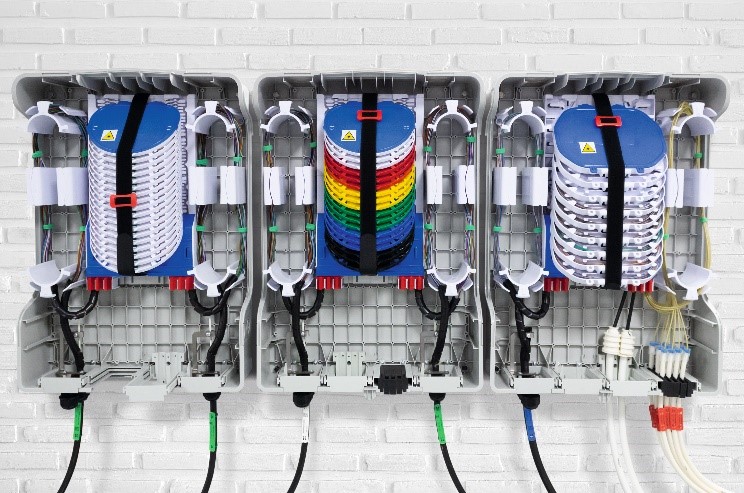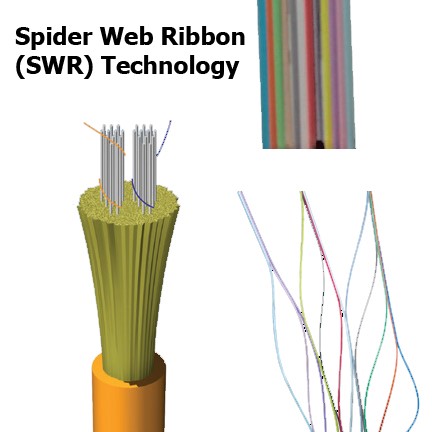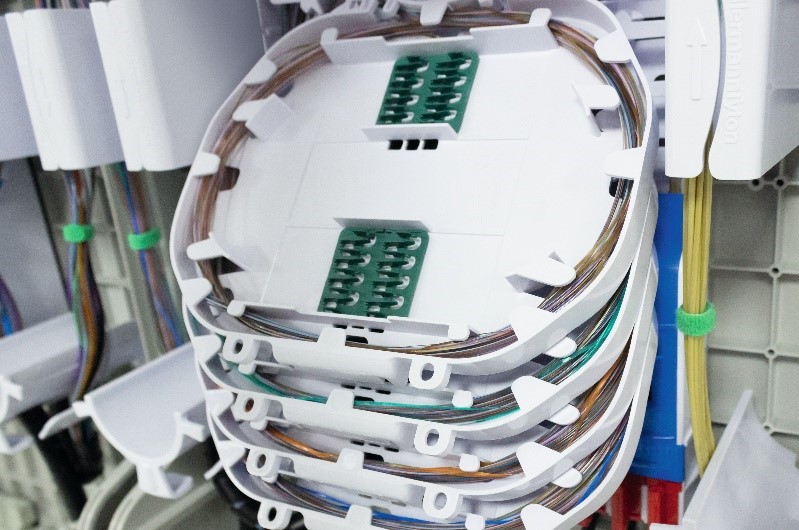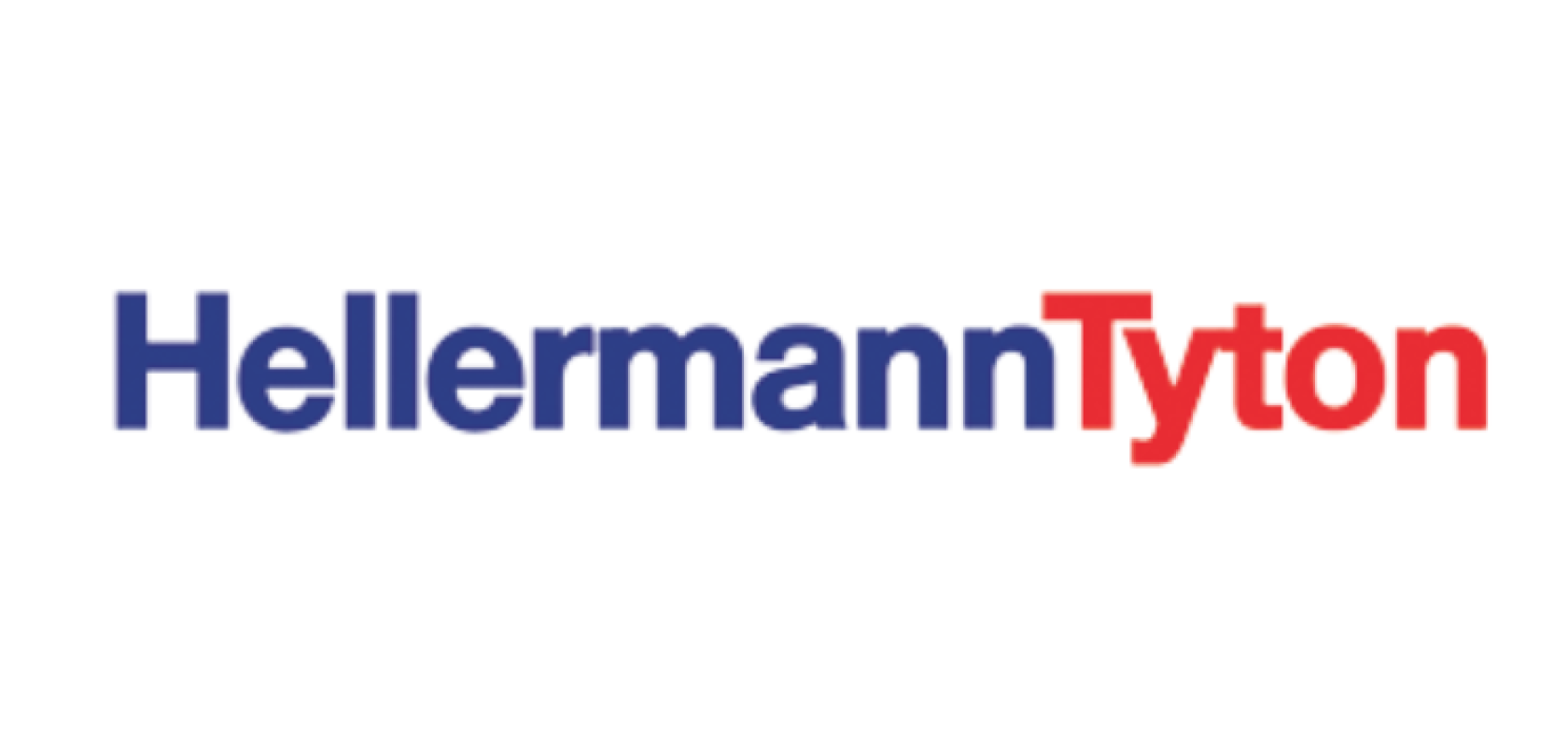Fibre based building connectivity is not new, building entry points are not new so what is new that warrants another application note on the subject.
Buildings and their communications requirements have never been so diverse which in turn requires an almost infinite degree of flexibility and configurability in the scale and functionality of its building entry point or points. In this application note we’re going to explore the variety of solutions available to suit today’s broad spectrum of roles from multi-tenant commercial office spaces to terabit-scaled inter-datacentre connectivity.
Outside plant (OSP) cables can travel tens and even hundreds of kilometres in the harshest of conditions and as such their construction is often immeasurably different to simple, often lower fibre count, inside plant (ISP) cables. The materials and cable construction used are chosen to endure an external environment and as such many OSP cables should not be routed through indoor spaces more than a few metres into a designated space, frequently referred to as a meet-me room. The scale and redundancy requirements of the installation will dictate the size and number of meet-me rooms, which in turn will determine the type, size and scale of a suitable building entry point (BEP) or points.

BEPs come in a vast array of shapes and sizes, but each of them performs the same function: providing a suitable method for terminating the OSP cabled optical fibres, close to the boundary of the building, such that the fibre can be connected (usually spliced) to the network of internal grade fibre cables that route into the network or networks which reside there. BEPs in the form of sealed dome closures, 19” rack mounted fibre management systems and modular wall-mounted designs all meet the above minimum requirements for a generic BEP. Each has its strengths and weaknesses which we will explore in the coming sections. Figure 1 shows a selection of typical BEPs in use today.
Many factors influence the decision on which BEP a particular building should deploy, from size, number of input and output cables, single fibre or ribbon fibres, wall mount or rack mount, spliced or connectorised, FMS, etc. One of the more often unconsidered aspects of BEP choice is that of familiarity of fibre routing and splice tray options. Most experienced fibre splice engineers will have their favourite FMS and splice tray solutions and whilst this is often a significant influencer, so should access and availability of those components. Building consistency into the design of a fibre network, especially one where OSP and ISP are being somewhat mixed should be considered and having an FMS solution that is deployable in both will ensure an optimised audit and maintenance scheme and methodology and increased efficiencies in training, installation and supply chain.

Numerous techniques and approaches exist that attempt to optimise the volume of data transmitted over a single optical fibre. The techniques include solutions based on dense wave division multiplexing (DWDM) and reconfigurable optical add-drop multiplexors (ROADM’s). Other technologies to extend the reach of singlemode fibres to hundreds of kilometres using erbium doped fibre amplifier (EDFA’s) are also in common use. However, even with these highly effective approaches, service providers of all sizes are also installing enormous quantities of cabled optical fibres under the streets and road of the towns and cities we live in as well as between countries and continents. More and more of these large fibre count cables are utilising ribbonised fibres to yet further increase a cables overall data carrying capacity. Several well known cabled optical fibre manufactures produce ribbonised fibres, such as AFL and Corning.
However, not all ribbon fibres are created equally and more recent innovations allow ribbonised fibre to be installed and spliced into more traditionally single or multi-element (SE/ME) as opposed to single or multi-ribbon (SR/MR) trays. The novel design of the AFL Spider Web Ribbon (SWR) fibre allows it to be mass-fusion spliced in twelve-fibre splice protectors whilst at the same time be routed around the short corners or a standard splice tray due to only being fused to adjacent fibres of the ribbon every 20mm or so. Ranging is fibre count from 144 to 3456 fibres per cable, the size and capability of a suitable BEP will need to be just as diverse.

Whilst ribbonised fibre cables are an efficient way of providing high fibre count cables, single fibre cable designs are still significantly more popular. Ensure sufficient splice locations to enable all incoming fibres to be connected to the required number of internal fibres is still essential. Having the ability to mix-and-match single fibres and ribbon fibre provides the best of both worlds, as does being able to utilise single-circuit (SC) and SE trays for standard fibres be that in a 250µm or the smaller, and therefore high density, 200µm designs.
Data Centre Interconnect (DCI) is a significant user of high fibre count cables and being able to terminate them in a useful and efficient manner is of paramount importance along with offering diverse routing and multiple meet-me rooms in a single DC campus.
Putting the above series of requirements down on paper and then searching through the myriad of options available is nothing short of daunting even for the most accomplished of fibre installation specialists. Having a good understanding of the following aspects for BEP choice is essential:
• Number of fibres
• Single fibres or ribbonised fibres
• Single-circuit, single-element or single ribbon (or multi in each case) separation
• Number of incoming and outgoing cables
• External sealed dome closure, wall-mounted or 19” rack mounted design
• Splice or connectorized
In all but the most extreme of specific cases each of the above requirements can be expertly accommodated using the HellermannTyton S5 series of internal fibre termination enclosures. This family of IP55 enclosures comes in multiple configuration options including number and sizes of input and output cables, loop through, blown fibre tube (BFT) support, SC, SE/ME and SR/MR tray options, fibre cable loop storage and a fibre distribution raceway based FMS.
The S5 is wall mountable and at less than 400mm wide they take up very little space. They can also be bayed in an East-West configuration, allowing input and output fibre cables to be routed to the correct FMS for splicing.

Eighteen SE trays or thirty-six SC-B trays provide for up to 432 single fibre splices or nine ribbon trays each supporting 144 fibres in 12 mass-fusion splices given 1296 fibre in total. As standard up to eight PG gland style interfaces are available in each S5 enclosure or small cable rubber seals providing up to 4 ports of 24off 7mm cable ports. A combination of the two port types, including a pass-through port that supports up to 14mm in cable diameter.
Wall mounting is the obvious choice for the S5 enclosure, but that can sometimes make integrating the BEP into the building’s cable management system problematic. Integrating a well considered mounting framework and cable management system into the installation of an S5-based BEP solution has numerous advantages. Utilising a Unistrut-style solution with either galvanised cable basket tray or wire-mesh cable basket in both horizontal and vertical orientations. This type of installation will assist in cable routing and anchoring as well as cable identification and labelling.
Numerous identification solutions are available from Hellermann-Tyton for all types of applications. The TipTag range of solutions offer numerous cable label products that are available as self-laminating and well and cable-ties secured and sizes for single small diameter cables to large high fibre-count cables. Labelling incoming and outgoing cables is essential in high fibre count BEP solutions, especially when ensuring future maintenance and expansion are important features of the BEP. Colour options for the label are also available and should be used widely to separate cable routes, functions, customers, etc.

Tray labelling is also well worth integrating into the overall BEP design so that fibre can be documented and managed on a very granular level. Tray top and tray edge labels as well as larger enclosure labels should all be deployed in various degrees depending on the actual or expected complexity of the BEP.
Further physical or functional separation of fibres can be integrated into the BEP design through the use of coloured fibre splice trays. All SC and SE trays are available in numerous colours, including white, red, back, blue, red, yellow and green and provide the installation contractor with an easy to follow coding scheme that can be deployed throughout the installation, be it a simple low fibre count commercial installation or a vast diversely routed high fibre count data centre interconnect installation.

Complementing the range of configurations and options available in the HellermannTyton S5 enclosures are two smaller options. The S3 supports up to 96 splices and optional connections and the S1 supports up to 24 splices and 16 connections. Both are available with an IP55 environmental rating and range of cable seal sizes and mounting options.
Once in the building, HellermannTyton have a fully portfolio of fibre connectivity options. RapidNet, our patented pre-terminated cabling offering allows the extension of incoming fibres to the remainder of the cabling plant in 19” rack-mounted modular cassette options. Available in pre-terminated custom lengths and able to utilise LC, SC or MTP/MPO connector options these products allow the complete extension and utilisation of the external fibre plant in every corner of the inside plant.
Building entry points need to provide a reliable, customisable, extensible and maintainable fibre interconnection functionality for a multiplicity of building shapes, sizes and purposes. Using the S-Series family of HellermannTyton enclosures offers numerous degrees of fibre separation, fibre and cable counts, identification and labelling options. In addition they allow considerable scalability to multiple stackable enclosures and interconnectivity to best-in-class pre-terminated internal fibre distribution products. The choices available also simplify fibre installation and usage through sophisticated tray design, functional tray allocation through the use of fibre separation, colour coding and identification options through cable and tray labelling.

